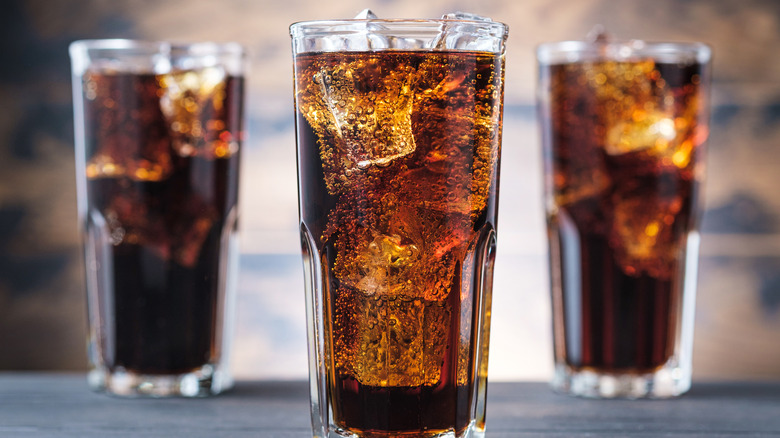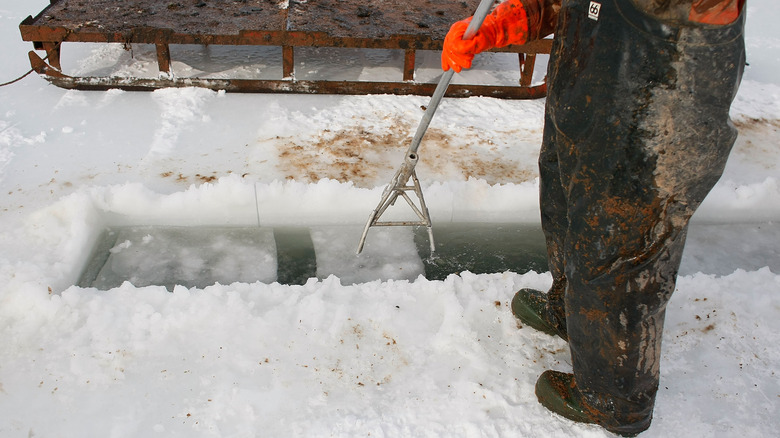How America's Love Affair With Ice Began
Those who have traveled to Europe have likely experienced many drinks sans ice. While that seems odd to Americans, the rest of the world continues to be surprised by just how much we love these cold cubes. But your European waiter isn't the only one annoyed by the need for more ice. According to Epicurious, even Henry David Thoreau was thoroughly put out by ice harvesters who joined him at Walden pond to noisily remove blocks of frozen water. It was then, in 1847, that the ice industry — driven by Americans — truly began to take off.
In 1806, another kind of Tudor royalty established its reign over the country's ice industry with big ideas to expand exports to the rest of the world. Boston's Frederic Tudor became one of the first American millionaires with this dedication and ingenuity to ship ice worldwide. He even worked to grow the business by convincing people to use it to cool their drinks rather than solely to keep food and medicines from spoiling. According to Reader's Digest, ice became a fad among the wealthiest Brits until it simply became too expensive.
Ice had staying power for Americans
Though the price of ice continued to be high for countries with greater distance from North America, where ice was being aggressively harvested, it eventually became more affordable for Americans after it became available year-round. That's when Americans' love of cold drinks and cocktails began to really solidify. A prevalence of ice even fostered the existence of lager beer in the United States. However, when ice became such a popular item to have at all times, the industry saw a major shift from harvesting to manufacturing.
The first ice machine was invented in 1845 by Dr. John Gorrie in Mississippi, but the concept did not begin to take off until more than 20 years later (via Alcohol Professor). In 1867, the idea was revisited by Andrew Mulh, hoping to improve beef transport in Texas. Even then, ice makers for the home were not successful nor affordable enough until the 1920s. But when ice makers entered residences, there was no turning back for Americans and their love of cold drinks — and the ability to safely store food longer.

